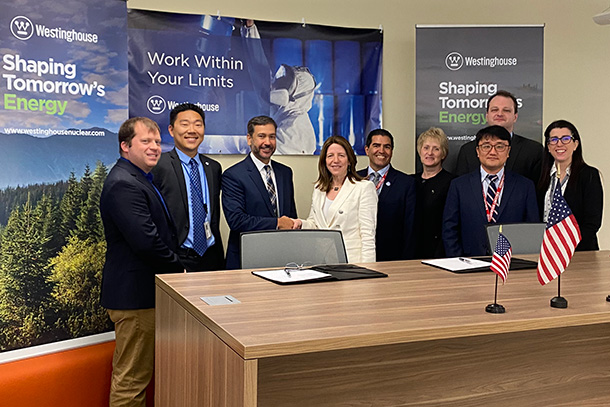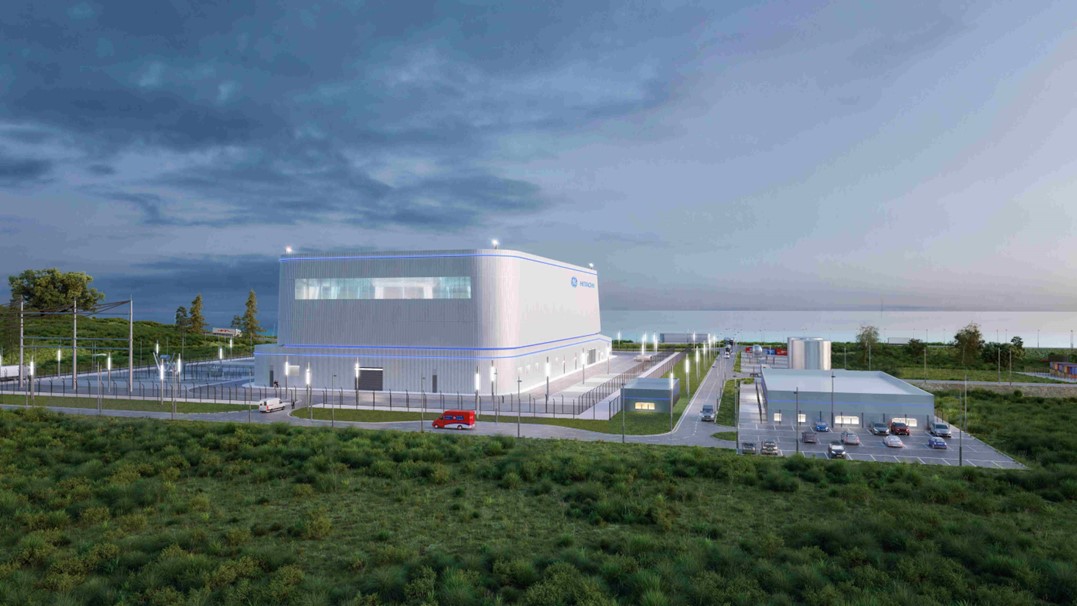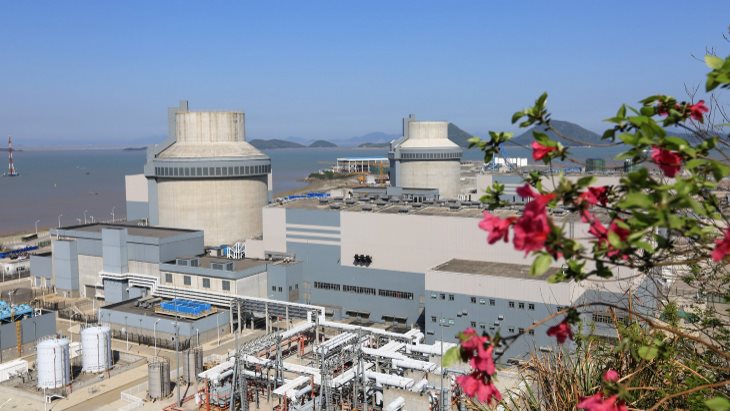Government policies and innovative technologies are the key to fusion energy economics
May 27, 2022, 4:38PMNuclear NewsBart Gordon, Tim Peckinpaugh, Mike O’Neill, and Molly Barker Artist’s rendering of the U.K.'s STEP fusion reactor. (Image: U.K. Atomic Energy Authority)
Fusion energy is attracting significant interest from governments and private capital markets. The deployment of fusion energy on a timeline that will affect climate change and offer another tool for energy security will require support from stakeholders, regulators, and policymakers around the world. Without broad support, fusion may fail to reach its potential as a “game-changing” technology to make a meaningful difference in addressing the twin challenges of climate change and geopolitical energy security.
The process of developing the necessary policy and regulatory support is already underway around the world. Leaders in the United States, the United Kingdom, the European Union, China, and elsewhere are engaging with the key issues and will lead the way in setting the foundation for a global fusion industry.
Artist’s rendering of a BWRX-300 plant. (Image: GE Hitachi Nuclear Energy)
Ontario-based GEH SMR Technologies Canada Ltd. and the Saskatchewan Industrial and Mining Suppliers Association (SIMSA) announced yesterday the signing of a memorandum of understanding focused on the potential deployment of the BWRX-300 small modular reactor in Saskatchewan.
The MOU calls for engaging with local suppliers to maximize the role of the Saskatchewan supply chain in the nuclear energy industry.
Hinkley Point C’s Unit 2, in March of this year. (Photo: EDF Energy)
The target date for the start of electricity generation at Hinkley Point C’s Unit 1 reactor has been moved back to June 2027, following the completion of a schedule and cost review of the new nuclear build project, EDF announced last week.
While the review considered the main aspects of the project to construct two 1,630-MWe EPRs in Somerset, England, the schedule and cost of electromechanical works and of final testing were not examined, according to the utility.
University of Tokyo technical experts practice procedures for HEU packaging at the Yayoi Research Reactor, with help from Savannah River personnel. (Photo: University of Tokyo)
President Joe Biden and Prime Minister Fumio Kishida of Japan have announced the successful removal of more than 30 kilograms of high-enriched uranium from three Japanese sites to the United States. The news came in a May 23 statement from the Department of Energy’s National Nuclear Security Administration.
The world's first AP1000 reactors to enter operation, Sanmen units 1 and 2, in China. (Image: Westinghouse Inc.)
Westinghouse Electric Company and South Korea’s Hyundai Engineering & Construction have signed an agreement to “jointly participate in global AP1000 plant opportunities,” the Pennsylvania-based nuclear technology firm announced on May 24.
The first overseas NuScale Energy Exploration (E2) Center is planned for Romania. (Photo: NuScale)
Small modular reactor developer NuScale Power announced on Monday the signing of a memorandum of understanding with Romania’s Nuclearelectrica to conduct engineering studies, technical reviews, and licensing and permitting activities at a site in Doiceşti, Romania, selected as the preferred location for the deployment of a NuScale VOYGR power plant.
McMaster University, in Hamilton, Ontario, Canada. (Photo: McMaster University)
McMaster University, Ultra Safe Nuclear Corporation (USNC), and Global First Power (GFP) have embarked on a new partnership to study the feasibility of deploying a USNC Micro Modular Reactor (MMR) at McMaster University or an affiliated site. The three partners last week announced a memorandum of understanding that will support research on advanced reactor and small modular reactor technologies in support of Canada’s Net-Zero Emissions by 2050 goal.
The Pantex Plant in Texas (Photo: NNSA)
The National Nuclear Security Administration announced last week that it is canceling its November 2020 contract solicitation for management and operation of the Pantex Plant and Y-12 National Security Complex and terminating the contract award announced in November 2021 for the two sites. The NNSA intends to hold two new competitions for separate contracts to manage each site.
The Palisades nuclear power plant
Despite last month’s strong (and many might say overdue) expression of interest from Michigan Gov. Gretchen Whitmer in extending the operational life of the Palisades nuclear power plant via the Department of Energy’s new Civil Nuclear Credit Program, the facility’s 777-MWe pressurized water reactor was removed from service last Friday—11 days prior to its scheduled May 31 retirement date.

Representatives from Westinghouse and Penn State met at Westinghouse headquarters to sign a memorandum of understanding and enter a partnership focused on researching and developing microreactors. From left: Jason Beebe, director of the global transformation office at Westinghouse; Michael Valore, senior director of advance reactor commercialization, Westinghouse; Mike Shaqqo, senior vice president of advanced reactors, Westinghouse; Lora Weiss, senior vice president for research at Penn State; Jean Paul Allain, head of the Ken and Mary Alice Lindquist Department of Nuclear Engineering at Penn State; Geanie Umberger, associate vice president for research and director of industry research collaborations at Penn State; Saya Lee, assistant professor of nuclear engineering; Elia Merzari (back), associate professor of nuclear engineering; and Hilary Ruby, director of transformation for the Americas Operating Plant Services Business Unit at Westinghouse. (Photo: Westinghouse)
Artist’s rendering of USNC spacecraft using EmberCore. (Image: DIU)
The Defense Innovation Unit (DIU), a Department of Defense organization focused on swiftly putting commercial technology to use in the U.S. military, has awarded contracts for two nuclear technologies—compact fusion and radioisotope heat—for spacecraft that could carry a high-power payload and freely maneuver in cislunar space. The objective is to accelerate ground and flight testing and launch a successful orbital prototype demonstration of each approach in 2027.








-2018.jpg)










